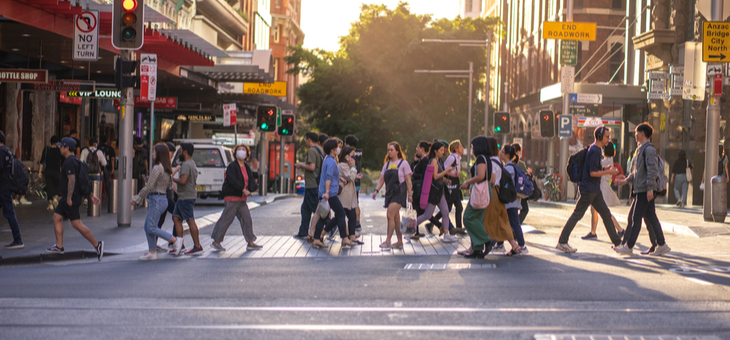An expert who helped develop the modelling underpinning Australia’s four-stage plan to transition away from lockdowns says virus case numbers in NSW need to drop for the high vaccination rates outlined in the plan to be effective.
University of Melbourne professor of mathematical biology James McCaw, who is also part of the Doherty Institute, said multiple factors needed to be considered in following the plan, which outlines goals of 70 per cent and 80 per cent of the population being vaccinated.
“The roadmap is all built around the fact that we can open up when we are able to manage the virus circulating in the community,” he said.
“Effective management of circulating virus without lockdowns requires high vaccine coverage and it requires there not to be a lot of cases in the community.”
“Of course there will be some, but not a lot.”
States separated by more than a land border
Yesterday, as New South Wales recorded more than 600 new cases and Victoria saw a substantial jump in numbers into the 50s, the language from the two premiers was noticeably in contrast.
Both made reference to the Doherty Institute modelling, but their interpretations of what it meant for their respective outbreaks was very different.
NSW Premier Gladys Berejiklian said her state was “learning to live” with the Delta strain.
“I appreciate what we are going through looks difficult but every state in Australia will need to come to terms with the fact that when you get to a certain level of vaccination and open up, Delta will creep in,” she said.
“We can’t pretend that we will have zero cases around Australia with Delta.
“As the Doherty report says, once you get to 80 per cent double dose and you have to open up, everyone will have to learn to live with Delta.
“In New South Wales, we are learning that earlier than others.”
In Victoria, Premier Daniel Andrews said the only way to ease restrictions would be to have “cases down, and vaccination up”.
He has said that he believed Victoria could reach zero cases again, and said the modelling from the Doherty Institute that underpins the plan required “very few cases” to be circulating.
“That’s why we’re working so hard to get to that point, because the modelling that 70 will work and 80 will work, that is to be open and in a very different world by the end of this year,” he said.
“It gets harder to do that if there’s cases running wild.
“You’ve got to go into those eased restrictions, those new sets of rules, with as few cases as possible.”
Tracing less effective when numbers balloon
Professor McCaw said the reason case numbers needed to be low was because the “test, trace, isolate and quarantine” method is very effective with small cases numbers, but less effective with a large number of cases.
“That’s simply because the logistics of contact tracing and managing, through our public health units, hundreds and hundreds of people, is just very difficult,” he said.
He said Mr Andrews was right but he said COVID cases did not need to get down to zero.
“What we need, with the escalation of epidemic activity and high case loads that we have in New South Wales, and we may have in Victoria in the future, we need to get that down before the positive effects of the high vaccine coverage will be fully realised and allow us to relax some of the measures, like lockdown,” Professor McCaw said.
He said the NSW outbreak could have been managed better over previous months, but he said it “could have been worse” and public health units in the state had been doing their jobs well.
“The fact that we are increasing vaccination coverage in NSW will help prevent or slow the spread of the virus over the coming weeks and months,” he said.
“I think it’s quite likely or entirely plausible that the NSW will peak and we’ll start to see a decline in case numbers over the same timeframe as the reopening agenda.”
Professor McCaw said if that happened and numbers began to decline, they may “be at a level which is manageable in and entirely compatible with the roadmap that we have”.
He said it was important to remember that steps on the national roadmap would “always need to respond to the local epidemiology” and policy settings in different states and territories.
He described the varying situations in states and territories across the country as “a complicated ecosystem”.
“This is a massive challenge for society to manage and so there are many, many different tools and levers and instruments that are used to respond and plan how to respond,” Professor McCaw said.
 © 2020 Australian Broadcasting Corporation. All rights reserved.
© 2020 Australian Broadcasting Corporation. All rights reserved.
ABC Content Disclaimer

